Verizon iPhone 4: Thoroughly Reviewed
by Brian Klug on February 13, 2011 9:32 AM ESTIntroduction
The story of the Verizon iPhone 4 is definitely an astonishing one. Leading up to nearly every iPhone release was endless speculation that a CDMA version would launch simultaneously, finally bound for the largest carrier in the US. The combination of carrier exclusivity, endless reports of AT&T's 3G failing during trade shows and conferences, pent up demand, and numerous other factors combined to create a perfect storm of rumor and mystery. Each time, analysts, insiders, and pundits alike were certain it was just months away - and then prove to be no more well informed than the rest of us.
It's surreal to think that everyone finally got it right. In retrospect, it also seems fittingly ironic that Duke Nukem Forever will launch the same calendar year as the Verizon iPhone 4.
The truth is that what differs between the Verizon iPhone 4 and its older brother isn't a whole lot - and that's overwhelmingly a good thing. In case you're just starting out, the main difference between the two is entirely network technology. In the USA, carriers such as Sprint, Verizon, US Cellular, MetroPCS and a number of others use 3GPP2 camp technologies for a variety of reasons. These are CDMA2000-1x, and CDMA2000-EV-DO, known colloquially as just 1x and EVDO.
The story goes something like this. Europe and the majority of the planet soon after adapted GSM for 2G, then 3GPP technologies for 3G - UMTS, HSPA, and now LTE all are under the 3GPP umbrella. In the USA, AT&T and T-Mobile are the dominant carriers running network tech from the 3GPP camp. Both have GSM/EDGE 2G and UMTS 3G networks.
The confusing bit in here is that CDMA is often confused with CDMA2000. On its own, CDMA refers just to the multiplexing scheme used - Code Division Multiple Access. Both CDMA2000 and UMTS use CDMA as the multi-user access scheme, the difference is primarily that UMTS allows 5 MHz channels (WCDMA) whereas CDMA2000 uses 1.25 MHz channels for data and voice. Before UMTS arrived on the scene, the distinction made a bit more sense since GSM is TDMA - Time Division Multiple Access.
Apple shopped around for a carrier to bring its iPhone to, and settled on Cingular after getting the door slammed in its face by everyone else, or so the legend goes. Cingular became AT&T, Apple released a GSM/EDGE 2G phone, then three 3G phones with different levels of HSPA support, and you know the rest.
Physical Differences
It's boring to start out a review with a history lesson though, so let's stop there. On to what's different about the CDMA version of the iPhone 4.
The Verizon iPhone 4 has a noticeably different outside appearance. The AT&T (GSM/UMTS) iPhone 4 is on top, the Verizon (CDMA) iPhone 4 is on the bottom in all the following photos.
The black stainless steel strip at the top has moved to the far left side, displacing the vibration switch by a mm or two.
The right side has a new symmetrically placed black strip as well. The two at the bottom remain the same on both sides. Obviously the other big change is the absence of a SIM slot entirely - oh and likewise there's no SIM ejector tool in the box.
On the back, there's another more aesthetic difference. The Verizon iPhone 4 lacks the regulatory labels that adorn the AT&T version. Gone are the FCC, non-recyclable battery, and European Conformity CE markings. Apple seems to do something to visually distinguish each iPhone based entirely on the back. The iPhone 3GS brought chrome on the back to distinguish it from the 3G, and the CDMA iPhone 4 does away with some iconography. Fair enough.
On the bottom nothing much is changed, though the Verizon iPhone 4 comes with pentalobe screws whereas our launch iPhone 4 has phillips.
One of the other interesting changes is how vastly different the vibration unit is. I was a bit skeptical that the difference would be perceptible - it's actually noticeably different. The older vibrate unit feels loud and harsh, like something inside is actually rattling around. Of course, the old vibration unit is rather standard fare for phones - a counterweight on a motor. The new vibration unit occupies much more area inside, but the vibration feel is entirely different. It's almost completely silent, and makes the entire phone feel like it's moving as one complete piece. It's difficult to describe - it's a deeper and more precise vibration.
I've put together a video overview of everything there is to mention about the Verizon iPhone 4, and included in there is a demonstration of how silent the new vibration unit is.
Not making any noise while vibrating is both a good and bad thing depending on the context. I always leave phones on vibrate, so having them make some noise is occasionally useful. It's virtually undetectable now, so if you leave the phone on a desk and have a call come in, chances are good you'll miss it unless you can feel the vibe.
On the flipside, it's a completely different experience when you're on a call and an email or SMS comes in. This is when not having the vibrate unit not make any noise is a godsend. Previously, the vibration was intense and noisy enough to make it difficult to hear the other party, and at the same time the noise was audible on the other side of the call. Now, it's silent enough to not interrupt the conversation or cause a lapse in audibility at all.









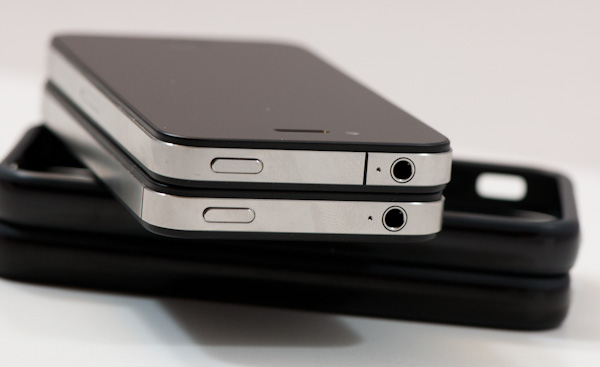
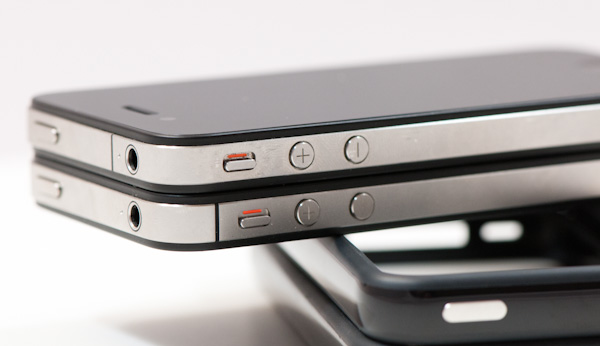
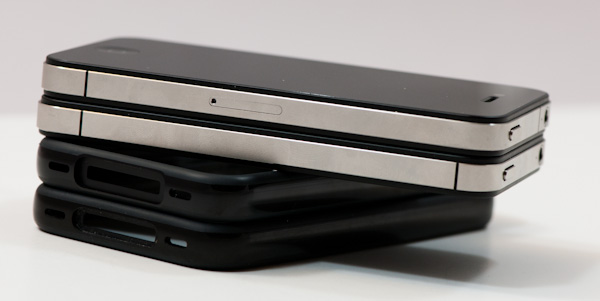
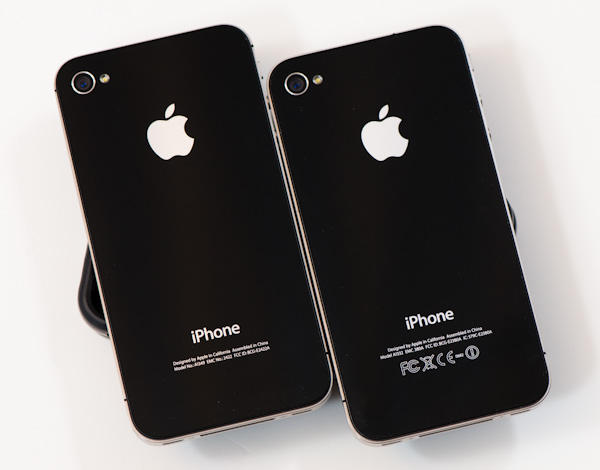
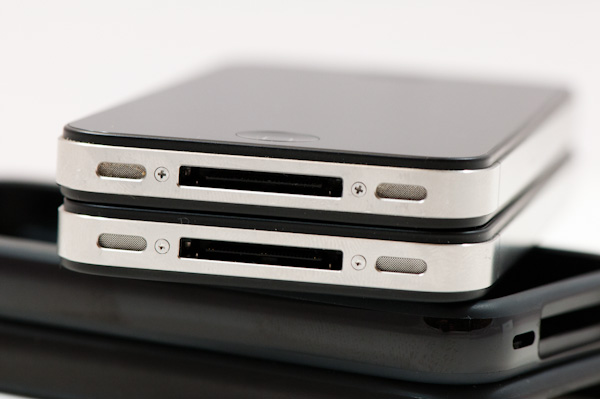








35 Comments
View All Comments
walmartshopper - Monday, February 14, 2011 - link
"With the phone facing up, the first cellular antenna consists of the new strip at the very top. The second is the strip running from the bottom left, across the bottom, and up the right side of the phone. The far left side with volume buttons and the vibrate switch is part of the WiFi and Bluetooth antenna."In the picture below that, the phone is face down, so shouldn't the colored labels be reversed?
ol1bit - Monday, February 14, 2011 - link
I know in the city it "might" not make a difference, but here in Phoenix, AZ (no hills, etc). My AT&T work phone drops out just driving from Goodyear to downtown on the morning commute (I-10). My Verizon droid does not.Next up: offroading
Doesn't matter where I have been, my AT&T phone lost signal pretty much as soon as I hit the dirt. My friends Verizon phones worked 90% of the time.
So I waited and waited for a powerful Smart phone on Verizon and I got my Droid. No more no-signal! I was on a power line dirt road 30 mile from Prescott with terrain mapping on and seeing the little more that cow trails on one of my 3 day quad trips, it was a big help!! My work AT&T phone dead for the entire 3 days!
So the difference may not be much in the city, but where Verizon really shines is outside of the city. It was simply amazing that I had data so far out and not even voice with my At&T phone.
7Enigma - Tuesday, February 15, 2011 - link
I kept finding myself trying to figure out which phone in your review was the Verizon and which the AT&T. For those of us not up on the lingo of UMTS and CDMA it is a bit confusing. I would have preferred if you had just changed these to say Verizon and AT&T so I could read it more fluidly without constantly having to sit and think which carrier you are talking about.Great review though!
Thanks
chupacabramike - Thursday, February 17, 2011 - link
Guh I can't believe people are still defending at&t service. Look at any customer satisfaction stat..any of them and you will see Verizon soars while at&t sinks. Being able to actually use your phone as a phone priceless. Thank you Apple and Verizon for finally giving us a choice.pshen7 - Thursday, February 17, 2011 - link
Can't wait for the Verizon iPhone! I'm tired of the dropped calls from ATT. My contract is up too so switching should be easy. I'm sure millions feel the same way like I do.Peter, founder of http://koowie.com : Search.Post.Connect.
Laughing Coyote - Thursday, February 17, 2011 - link
FYI, the AT&T iPhone 4 doesn't come with a SIM ejector tool either. Though it apparently does in some other countries.http://www.apple.com/iphone/specs.html
skyflyrr - Thursday, February 17, 2011 - link
Working in the RF wireless field I must commend you on the first accurate tear down and labeling of components of the Verizon iPhone 4.Reviews of Reviews - Friday, February 18, 2011 - link
For a not-quite-so-thorough review of this review, check out www.reviewsofreviews.comfadam - Sunday, February 20, 2011 - link
On the second page, it seems that the paragraph describing the location of the antennas does not match the photo. The text references the iPhone being "face up" while the photo shows the phone face down. The highlighting of the antennas would need to be mirrored in the picture in order to match the text. Really enjoyed the writeup.asandok2 - Monday, February 21, 2011 - link
Thanks for the reply! I thought that would be the case! I found a thread on macforums from last year where a guy speculates that the backplate has something to do with the antenna system too.http://forums.macrumors.com/showthread.php?t=95718...
Any idea if there is truth to his theory?? Is that part of the cellular antenna too?? Thanks in advance!